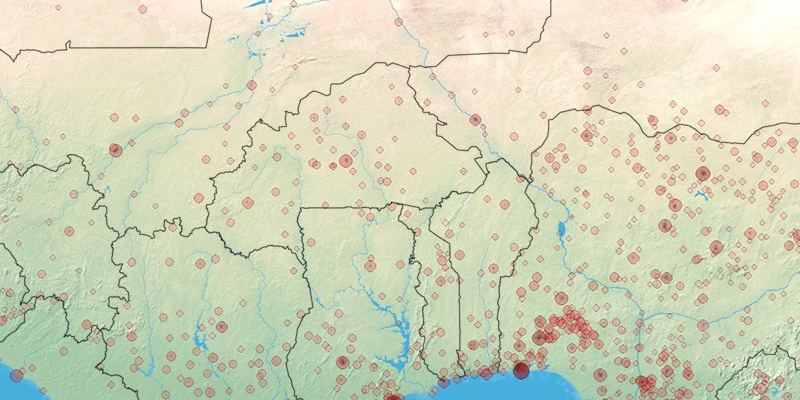Sources, Notices
1971e, 1981e, 1991c, 2006e, 2015e. Legend: e-estimate, c-census, o-other, ..
* Unofficial, calculated population.
** In some cases boundaries changes also influence the comparability of the population data. Data is provided "as is" without warranty or any representation of accuracy, timeliness or completeness.
Terms of use.
[1] Sources
•
National Population Commission of Nigeria•
2006 Population and Housing Census - PDF PRIORITY TABLE, Volume IV, POPULATION DISTRIBUTION BY AGE & SEX, (STATE & LOCAL GOVERNMENT AREA)•
ANNUAL ABSTRACT OF STATISTICS, Nigeria, 2010 Census 1991, 2006 Local Government Area. Page 23+•
World Gazetteer - Nigeria•
World Urbanization Prospects: The 2014 Revision, CD-ROM Edition. United Nations, Department of Economic and Social Affairs, Population Division (2014). [2] City density map, generated by population.city using data provided to us by 1km.net website. Every circle is city with population over 5000.
Link
[3]
Population density map generated by instructions from daysleeperrr on reddig.
Link1.
Used data source is the Gridded Population of the World (GPW), v3 online at the the Socioeconomic Data and Applications Center (SEDAC) at Columbia University.
Link2.
Additional urban land cover: Extracted from Global Land Cover Characteristics Data Base Version 2.0 and Binary MOD12Q1 data on shadedrelief.com.
Link3 (PNG,0.5Mb).




 108°
108° 151°
151° 139°
139° 191°
191° 128°
128° 91°
91° 159°
159° 122°
122°